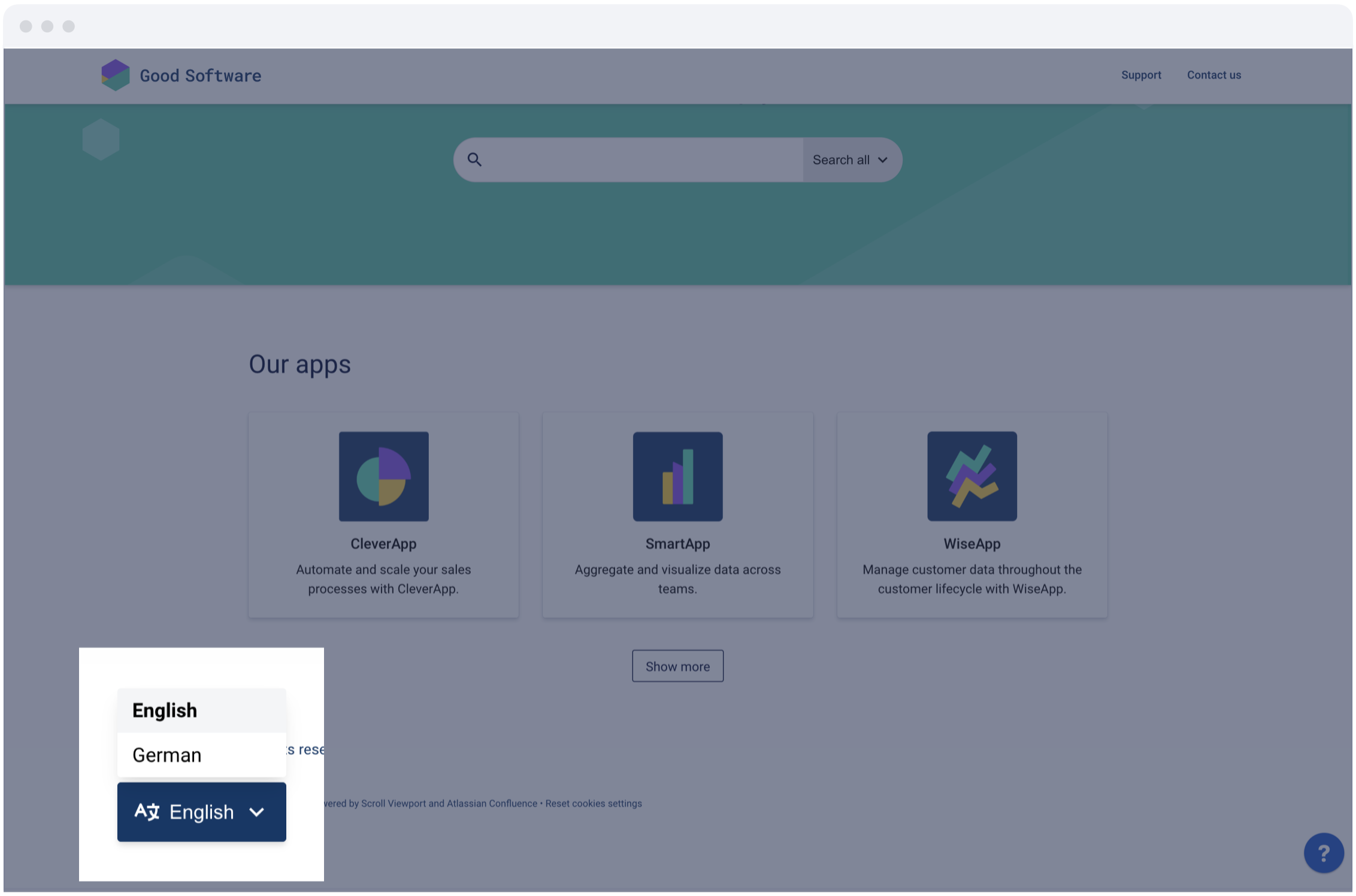A multilingual site is a great way to provide better and more appropriate help to audiences that speak different languages.

Typically, a multilingual website has:
-
content available in more than one language - ideally this is the case for every piece of content or the majority of content.
-
pages that are optimized for the currently selected language - default texts and error messages appear in the correct language and the HTML metadata indicates this language to screen readers and search engines.
With the Scroll suite of apps, it’s easy and quick to deliver a website in more than one language.
To follow the steps described on this page you will need to install:
Why a Multilingual Site?
Whether you are targeting new global markets for your products or services or are required by law to provide content in (co)-official languages, making content available in more than just one language (e.g. English) has a series of advantages:
-
It can help you reach and connect to your audience better
-
It can ensure that you provide the same experience to all your users or customers regardless of the language they speak or the language they are most comfortable with
-
It can prevent or avoid confusion or misunderstanding, especially if the topic is complex and very technical
Step 1: Develop Content in an Authoring Language of Your Choice
To start creating content, we recommend using Scroll Documents and Translations for Scroll Documents. The apps fully integrate with Scroll Sites and will help you manage your content and translations later on.
1.1 Create a Scroll Document for your documentation
In a first step, you create a document with Scroll Documents.
Already created a Scroll Document? Please proceed to step 2.2.
Scroll Documents helps you manage your content development workflow. You can create your document from scratch or from existing content.
When creating documentation, start developing content in the language that you or your team feel most comfortable in. That can be the mother tongue of your contributors or your team’s base country of operations.
Don’t worry about other languages at this point. The first goal is to finalize the content in one language, so you have a baseline for your translations.
→ Get going: Create a Document
1.2 Activate and add languages on your document
Since you want to work with documentation in more than one language, you should activate Translations on your document.
In a first step, you’ll be asked to define your authoring language. By this point, you should have already developed some content that is in your authoring language. It’s okay if your authoring language and your site’s default language later on differ. In many cases, however, they’ll be the same.
After setting the authoring language, you can start adding all the other languages that you plan to offer in your site. At this point you’re not translating yet, you are just preparing your document to absorb translated content later on.
→ Get going: Define and Delete Languages
Before moving on to actually translating your content, it’s a good idea to have completed developing the content in the authoring language.
Step 2: Create Translations of the Content From the Authoring Language
After defining all the languages that you plan to make your content available in, you’re ready to provide the actual translations.
Unless you aren’t actively using the versioning feature, we recommend to only add translations to saved versions and keep the Working version in the authoring language only. This makes it easier to separate the authoring and translating process.
For now, you can choose between two translations methods:
-
Translate manually in Confluence
-
Export/Import to XLIFF, a global localization file standard, and share it with external translators
Machine translations will be supported soon.
→ Get going: Create and Delete Translations
Step 3: Create a Site and Add Your Multilingual Content
Now that you’ve translated all or most of your content, you are ready to make these translations available in your Scroll site.
Create a Scroll site if you haven’t yet and add your translated Scroll Document as a content source to the site.
When adding your Scroll Document to a site, by default, Scroll Sites will publish all in the document available translations to the site. However, for each of your document content sources and each of their versions, you can decide which translation exactly should show in the site and which not.
→ Get going: Display Translations
If you decide to include content for one of your site’s documents or document versions in a specific language, we recommend to make all site content or as much as possible available in that language.
Step 4: Define the Site’s Default Language
The final step is to define which of your in the site included languages should be the main or default language of your site.
Ideally, your default language is the language that most of your audience speaks or understands. This is the language they will get to if no language is specified in the URL or elsewhere in the site.
Once you have made this decision, in Scroll Sites go to Site settings → General → Language. Set the Default language to the language of your choice and click Publish Changes.
→ Read more on Set a Default Language
